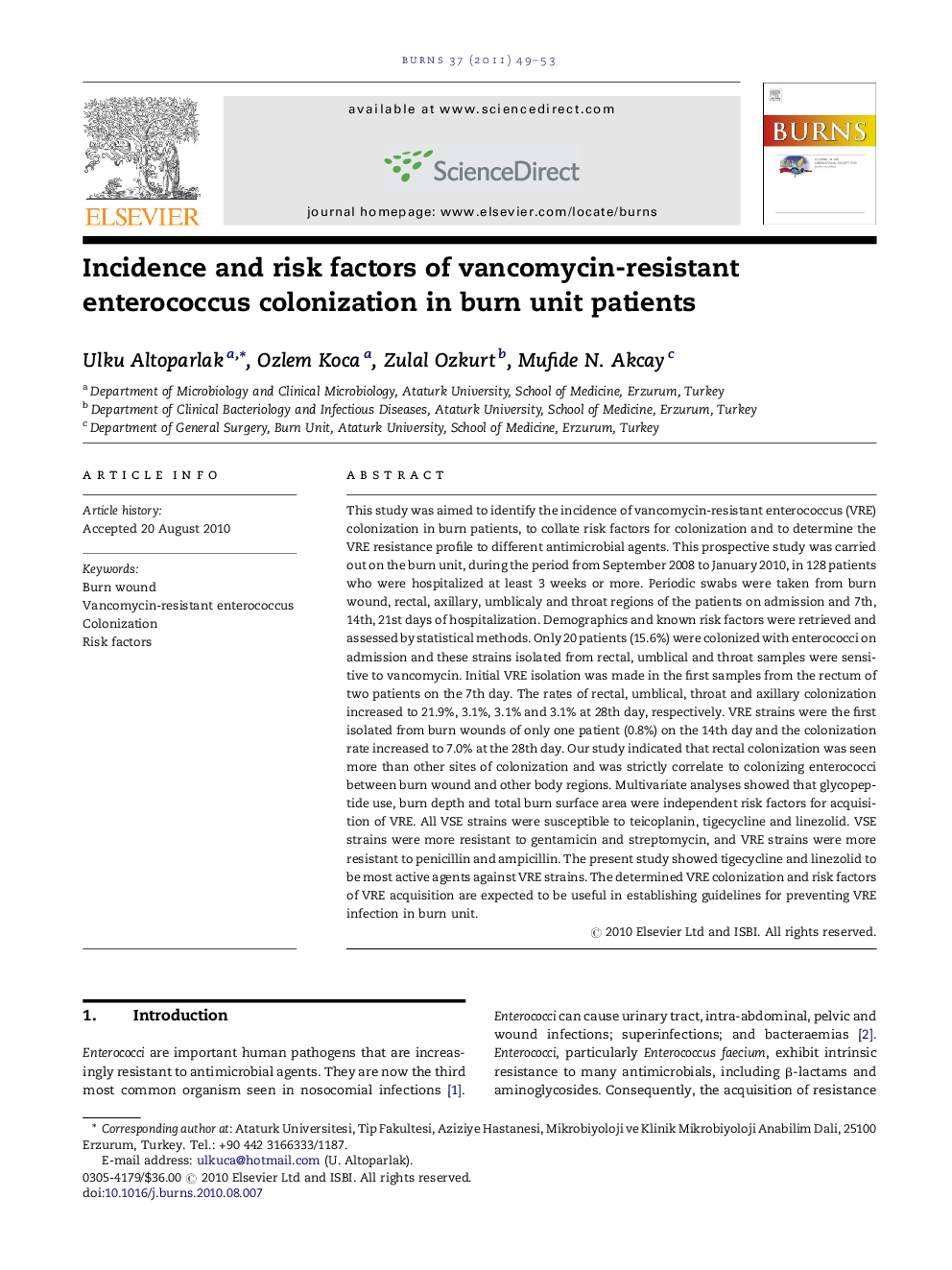| کد مقاله | کد نشریه | سال انتشار | مقاله انگلیسی | نسخه تمام متن |
|---|---|---|---|---|
| 3105014 | 1191670 | 2011 | 5 صفحه PDF | دانلود رایگان |
عنوان انگلیسی مقاله ISI
Incidence and risk factors of vancomycin-resistant enterococcus colonization in burn unit patients
دانلود مقاله + سفارش ترجمه
دانلود مقاله ISI انگلیسی
رایگان برای ایرانیان
کلمات کلیدی
موضوعات مرتبط
علوم پزشکی و سلامت
پزشکی و دندانپزشکی
مراقبت های ویژه و مراقبتهای ویژه پزشکی
پیش نمایش صفحه اول مقاله

چکیده انگلیسی
This study was aimed to identify the incidence of vancomycin-resistant enterococcus (VRE) colonization in burn patients, to collate risk factors for colonization and to determine the VRE resistance profile to different antimicrobial agents. This prospective study was carried out on the burn unit, during the period from September 2008 to January 2010, in 128 patients who were hospitalized at least 3 weeks or more. Periodic swabs were taken from burn wound, rectal, axillary, umblicaly and throat regions of the patients on admission and 7th, 14th, 21st days of hospitalization. Demographics and known risk factors were retrieved and assessed by statistical methods. Only 20 patients (15.6%) were colonized with enterococci on admission and these strains isolated from rectal, umblical and throat samples were sensitive to vancomycin. Initial VRE isolation was made in the first samples from the rectum of two patients on the 7th day. The rates of rectal, umblical, throat and axillary colonization increased to 21.9%, 3.1%, 3.1% and 3.1% at 28th day, respectively. VRE strains were the first isolated from burn wounds of only one patient (0.8%) on the 14th day and the colonization rate increased to 7.0% at the 28th day. Our study indicated that rectal colonization was seen more than other sites of colonization and was strictly correlate to colonizing enterococci between burn wound and other body regions. Multivariate analyses showed that glycopeptide use, burn depth and total burn surface area were independent risk factors for acquisition of VRE. All VSE strains were susceptible to teicoplanin, tigecycline and linezolid. VSE strains were more resistant to gentamicin and streptomycin, and VRE strains were more resistant to penicillin and ampicillin. The present study showed tigecycline and linezolid to be most active agents against VRE strains. The determined VRE colonization and risk factors of VRE acquisition are expected to be useful in establishing guidelines for preventing VRE infection in burn unit.
ناشر
Database: Elsevier - ScienceDirect (ساینس دایرکت)
Journal: Burns - Volume 37, Issue 1, February 2011, Pages 49-53
Journal: Burns - Volume 37, Issue 1, February 2011, Pages 49-53
نویسندگان
Ulku Altoparlak, Ozlem Koca, Zulal Ozkurt, Mufide N. Akcay,